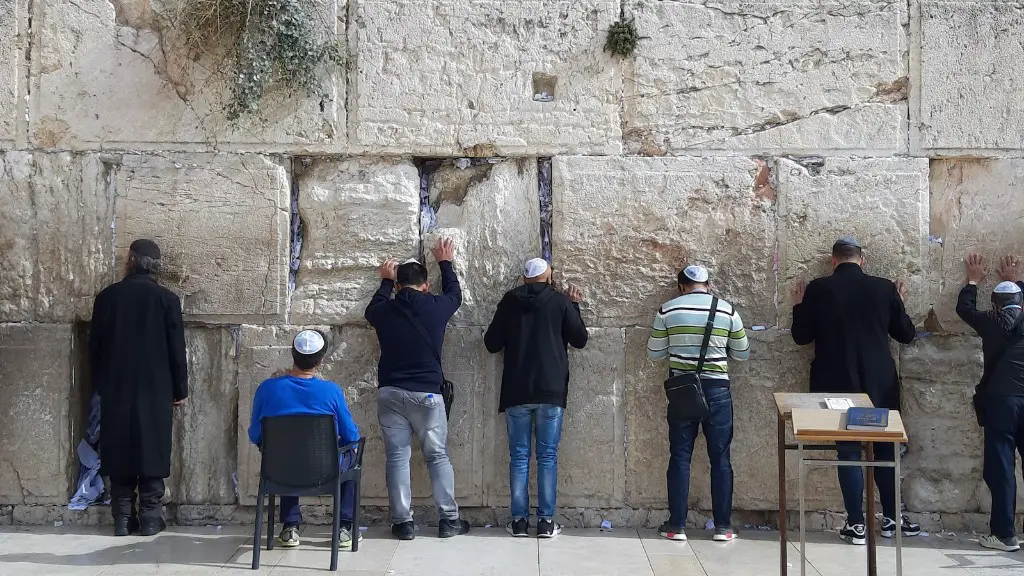Where is Judaism Mostly Practiced?
Judaism is one of the oldest and most widely-recognized religions in the world, with Jews and those of Jewish descent comprising some of the world’s most influential and important individuals. Estimates place the number of Jews worldwide at between 13.7 million and 15.3 million people, depending on who and what is considered “Jewish”. But where does the majority of this population reside? Let’s investigate.
The two countries that are home to the largest Jewish populations are Israel, accounting for 43% of the world’s total, and the United States, with 39%. While many Jews have found success and a safe haven to practice their faith in these countries, diverse populations of Jews can be found all over the world, from India and China to South America to the Europe and throughout the diaspora.
Within the United States, the largest concentrations of Jews can be found in New York, California, and Florida. Each of these areas has long been known for Jewish populations dating back for generations, and the state of New York is renowned for being home to the “modern-day” Jewish homeland of Manhattan. The Jewish population in the United States is predicted to grow in the near future, thanks to the country’s diverse population, acceptance of religious freedoms and strong immigration policies.
Of course, the majority of Jews will always feel most at home within the borders of their ancestral homeland, Israel. Despite the significant population of Jews in the diaspora, the majority of Jews have and continue to hold a special place in their heart for the country and the unique ability to practice the religion more freely than in much of the world. The growth of the Israeli population has been a major contributor to the overall growth of the Jewish population worldwide, as thousands of Jews have immigrated to the country over the past century.
The practice of Judaism can also be found throughout the world, wherever a small to large population of Jews lives. Synagogues and other Jewish religious buildings may be found in areas such as South Africa, India, and the United Kingdom, to name a few. Smaller populations of Jews are also scattered in countries such as Mexico and Japan, and although these populations may be quite small, they contribute to the general richness of the faith and its regional trends of development.
At the same time, it is important to acknowledge that the practice of Judaism is far from limited to the point of simply being found in certain geographical areas. In actual fact, Jews are becoming increasingly vocal in cities and towns around the world. Jewish communities are springing up around the world and it is not uncommon to find small groups of Jews practicing their religion wherever they may live. Whether it be in South America, Europe, or beyond, Judaism is held in high esteem and allowed to flourish wherever it is practiced.
Jewish Holidays
Jewish holidays are another important part of Judaism, and Jews the world over celebrate these holidays in adhering to the laws of the faith. Passover, Hanukkah, Rosh Hashanah and Yom Kippur are some of the most widely-observed holidays celebrated by Jews around the world. Similarly, Shabbat is observed by Jews around the world as a day of rest, beginning at sundown on Friday and concluding at sundown on Saturday evening.
In recent decades, technology and travel have made it easier for Jews to come together and celebrate these holidays in a variety of locations. Jews have the opportunity to come together in other countries to celebrate Shabbat, Passover, Yom Kippur and Rosh Hashanah and to experience a sense of unity. For example, many Jews travel to their ancestral homeland to celebrate the holidays and to take part in special pilgrimages and events.
At the same time, some Jews also choose to observe the holidays at home, especially those who may not have the means to travel to other countries. Whether it’s a community Seder or a family gathering, it is an important part of the faith to celebrate the cultural side of Judaism wherever one may find himself or herself.
Keeping up Jewish Traditions
For Jews, the traditional and cultural aspects of the religion are just as important as the spiritual side of the faith. From the reading of sacred texts to the practice of kashrut, or dietary laws, to the observance of Shabbat, Jews have much to offer in terms of practice and tradition.
The most fundamental part of Judaism is found in the Torah and other religious texts. In addition to this spiritual side of the faith, there are also the social and cultural aspects that Jews take part in. Everything from gathering to celebrate holidays to more mundane items such as bar mitzvah classes, Jews all over the world find many points at which to connect.
In order to ensure that Jewish traditions are preserved for future generations, it is important for Jews to understand the origins and meaning of these traditions. This can come from studying at a traditional yeshiva, teaching children about the faith, or simply engaging in everyday conversations with other Jews. Jews can also look to books or articles on the faith to gain a better understanding of their tradition and its practice.
Maintaining a Secure Environment
The safety and security of the global Jewish community is at the forefront of many Jewish people’s minds. Jews all over the world are invested in their faith and its practice, but there are also those who wish to perpetuate anti-Semitism or hate towards Jews. It is important, then, that the global Jewish population has access to a safe and secure environment in which to practice their faith and culture.
Organizations such as the Anti-Defamation League strive to combat anti-Semitism in both the public and private spheres, as well as providing resources and support for those affected by hate incidents. Similarly, organizations such as B’nai B’rith International work to promote interfaith dialogue and understanding between different religious groups. These organizations are essential in creating a more tolerant and safe environment for global Jews.
At the same time, it is also the responsibility of individual Jews to be active in the promotion of tolerance and understanding. This can take the form of speaking out against hate crimes, attending interfaith events, or engaging in conversations with those outside of the faith. Whatever the form, it is essential that the global Jewish population remain vigilant and active in the protection of its faith and its people.
Educating Others
Finally, it is essential that those outside of the faith understand the richness and depth of the Jewish practice. Jews are called to be menschen, or stewards, of the world and to educate others about the faith is an important part of this role. Jewish professionals, teachers, and community members should make an effort to be open about their beliefs and practices, and to make space for dialogue and understanding with those of other faiths.
Through teaching and engaging with others, Jews can help to spread both tolerance and understanding. From school curriculums to online conversations and initiatives, Jews can help to promote education and acceptance, as well as tackling hateful and ignorant stereotypes.
Modern Technologies
In the modern world, it is easy to access faith-related materials and resources through the internet. Organizations such as the American Jewish Committee have developed podcasts, videos, and other interactive platforms to help people of all religions understand the importance of tolerance and understanding between faith groups. In addition, Jewish organizations such as the Jewish Learning Institute offer classes and other learning opportunities to engage individuals in a variety of topics related to Judaism.
At the same time, there are also a number of digital initiatives that enable Jews from all over the world to connect and share their stories. Social media platforms such as Twitter or Instagram make it easy for those of the faith to connect, share resources, and discuss their experiences of practicing the faith. Similarly, virtual religious services such as livestreams and Zoom meetings allow Jews to continue their practice even during times of quarantine and travel restrictions.
In short, modern technology has allowed many Jews to stay connected, informed, and engaged in the practice of their faith. In a world that is increasingly connected, the use of tech to study, engage, and strengthen the practice of Judaism is an important part of the global Jewish experience.
Conclusion
It is clear that while the majority of Jews can be found in the United States and Israel, the practice of Judaism is a worldwide phenomenon. From traditional practices to modern technology, Jews are finding ways to celebrate and practice their faith. As students and practitioners of Judaism, it is essential to remember the importance of education, and to continue to explore and practice the faith in a safe and secure environment.



